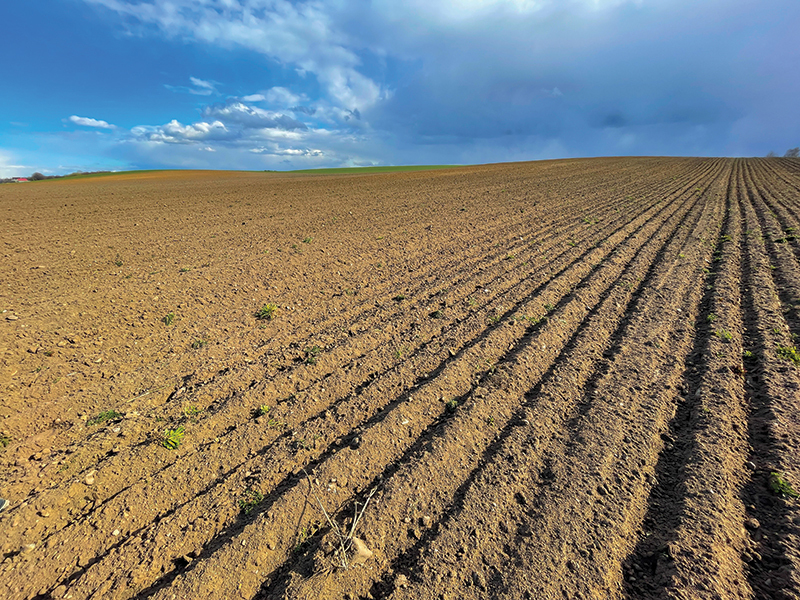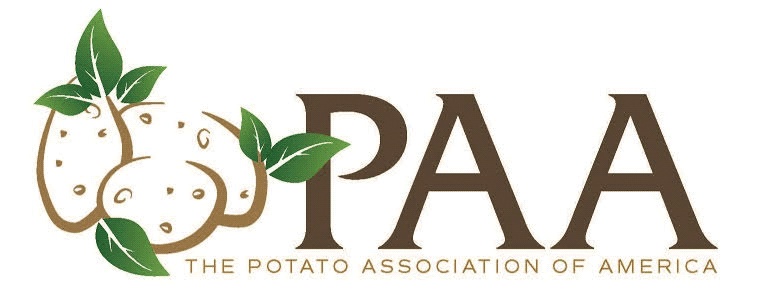
National team developing soil health practices specifically for potato cropping systems
 The USDA-Specialty Crop Research Initiative Potato Soil Health Project was awarded in 2018 to help the potato industry explore how soil health can be improved in potato cropping systems.
The USDA-Specialty Crop Research Initiative Potato Soil Health Project was awarded in 2018 to help the potato industry explore how soil health can be improved in potato cropping systems.
The overall goal of this program is to establish physical, chemical and biological indicators of soil health for sustainable potato production and new research and outreach is continuing in 2023.
The primary objectives were established to work across multiple potato growing regions and develop multi-state research projects to explore management practices and the resulting effects on soil measurements, indicators, microbiome communities and soil-borne pathogens. Additionally, an economic objective was created to determine how improved soil health benefits growers’ economic outcomes and ultimately their bottom line. Throughout this process, grower education and outreach were prioritized, and factsheets and other outreach materials have been developed to communicate to the potato industry what soil health means and extend current research-based results from the objectives to the larger agricultural community.
Soil health has been an agricultural buzzword in recent years, but the tenets of soil health have been around for a long time. References to soil balance and communities are found in literature from the early 1900s, but the ideas of soil health and published research became more common in the 1990s and 2000s. Now, soil health terms like soil quality, conservation tillage, no-till, organic amendments, cover crops, tilth and soil biology are commonplace in the agricultural vernacular and are often mistakenly viewed as the only option for soil health. But soil health is a mix of many factors, including soil properties, microbial activity and soil-borne pest disease control, all combined into on-farm practices and actions to produce a viable, economically productive cropping system.
Soil health can be difficult to characterize. Considerable research and debate is ongoing as to what measurements should be included in soil health assessment. These assessments usually consist of physical, chemical and biological measurements of soil. Current research is focusing on which biological measurements are the most relevant. For potato, the soil microorganisms — both the reduction in pathogens and the increase in beneficial organisms — play a key role in the health of the crop, and quantification of beneficial and pathogenic organisms may need to be part of soil health assessment.
However, many management practices within the potato cropping system can lead to increases or decreases in both of these types of soil organisms. Because significant soil disturbance occurs during the year potatoes are grown, alternative practices during the rotation years also need to be considered. Management practices such as the use of fumigants, organic amendments or cover crops, as well as tillage practices and crop rotation, influence soil microbial composition. These practices can also alter soil physical and chemical characteristics over the rotational system depending on the soil type.
Each change in the production system alters another aspect, and therefore, details on the relationships between certain production actions and their intended outcomes is still being evaluated. Furthermore, soil health varies due to multiple factors (cropping systems, region, climate conditions, variety, soil type, etc.) so recommendations of specific practices and determining their effectiveness are still in progress. Finally, time is often the controlling variable in improving soil health, as specific benefits may not be seen on the farm until years after initial implementation of the recommended practices.
Researchers in the USDA:SCRI Potato Soil Health project have been evaluating alternative agricultural practices that may influence soil microbial communities in beneficial ways. Soil microbes are involved in nutrient cycling and pathogen suppression, among other ecological activities. However, in potato systems, large scale, systematic studies on the links between crop management, soil microbial communities, crop damage from soil-borne diseases and crop yield and quality are currently lacking.
Given that much of the research on soil health has focused on small-seeded crops and the benefits of minimal soil disturbance (which is not an option during the year potato is grown), research is ongoing to establish a definition of “soil health” that is relevant to potato, and to determine which soil health promoting agricultural practices are economically viable. One goal is to include aspects of disease-suppressive soils for soil health evaluation in potato.
The USDA:SCRI-funded Potato Soil Health Project is working to identify indicators of soil health, determine soil health management practices and improve soil health in potato cropping systems across the U.S. Specific outreach fact sheets have been developed from this project that are designed for grower education. This set of fact sheets includes cover crops, soil amendments, microbial communities, nematodes, economics, disease suppression, biofumigation and organic amendments, just to name a few topics. This series of fact sheets can be found on the Potato Soil Health Project website at https://potatosoilhealth.cfans.umn.edu/education).
The overall educational outreach message is that soil health is complicated and needs to be part of an integrated approach. It is not just one component but part of a larger system. To achieve a healthy soil production system, the various components must work in unison, each complementing each other to help create a healthy soil environment.
A national potato soil health manual has been drafted based on results from this project and will be completed later this year. The manual combines materials from the factsheets with more details, research and breadth of each topic area and describes overall soil health practices and concepts for potato soil health cropping systems. This manual will describe general information, research-based definitions and best management practice options for adoption in potato cropping systems.
For more information about the USDA:SCRI Potato Soil Health Project, check out the project website at https://potatosoilhealth.cfans.umn.edu/ and review presentations, videos and extension materials under the education tab, or follow the Potato Soil Health twitter account @SpudSoilHealth.
The Potato Association of America mission statement: The PAA and its allied associations must strongly support the private sector through Extension, research and commercialization efforts aimed at enhancing the role of the potato as the premier food source for the 21st century.














